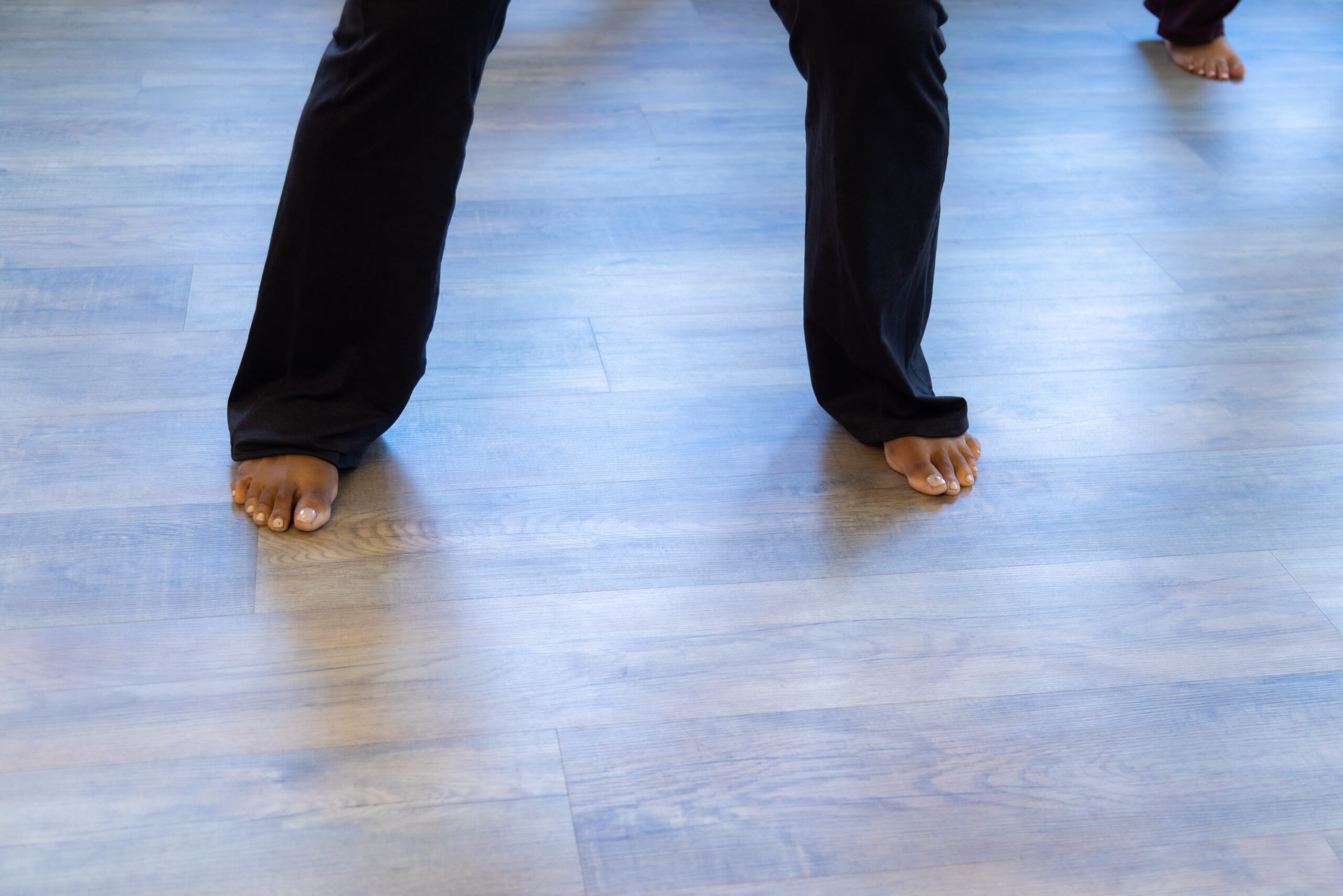Nia is comprised of 9 movement form personalities: 3 from martial arts, 3 from dance arts and 3 from healing arts. The body loves diversity in movement which is a healthy thing.
For this blog, I’m concentrating on the stances in the 3 martial arts.
Tai Chi, the Slow Dance – guides you to pay attention to your heel leading the way, your whole foot and shifting your weight vertically and horizontally. Sensing and paying attention as your body moves elegantly and your mind is relaxed.
Tae Kwon Do, the Dance of Precision – teaches you to stand your ground using kicks, punches and strikes. Sensing stability from the ground up while using your core to execute powerful and precise movements along your bones and joints.
Aikido, the Dance of Spirals – moves you harmoniously through space with minimum effort and maximum efficiency. Sensing your center, called the hara, you move seamlessly and with grace.
Different stances are used in different martial arts. Some are fighting stances. In Nia we’re ready to play and have fun rather than fight.
Nia uses stances to give you a foundation and stability, a grounding. From this foundation, you can kick, shift weight or start a spiral. The stances also give you a starting point to move into the other movement arts.
What are the stances?
Closed stance. Toes touch, heels are apart. Moving your body from a small pedestal trains you to work efficiently with the lower body.
Open stance. Your feet are parallel and hip width apart. This stance improves hip-joint strength and flexibility for increased comfort in moving.
‘A’ stance. Move your feet to shoulder width creating the letter ‘A’. Keep your knees spring loaded and relaxed. This stance is effective for improving breathing, hip flexibility, leg strength which works to improve agility and mobility.
Sumo/Riding stance. Move wider from the ‘A’ stance as if riding a horse. Knees are slightly bent. Your pelvis is aligned with your chest and head. You should be able to lift your toes. This stance is excellent for conditioning all the leg muscles and deeper breathing.
Bow stance. From an Open stance, one leg steps back onto the ball of the foot, as if that leg were a bow drawing back. Seventy percent of your weight is on the forward foot. This stance is excellent for walking and dealing with changes in levels, moving up and down.
Cat stance. Stand in place on one foot and press the other foot against the standing leg like you’re ready to pounce. This stance improves balance and the ability of moving at various speeds.
You can find illustrated stances in The Nia Technique book by Debbie Rosas and Carlos Rosas on Amazon or eBay.

